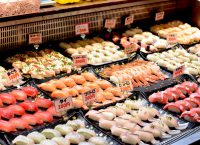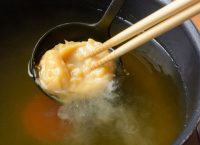Only one in the world! The fugu* cooking professional initiates Challenge the tora fugu* cooking experience at Shimonoseki

Karato-cho, Shimonoseki-shi, Yamaguchi POSTED on 2019.09.18
- from:
- Karato-cho, Shimonoseki-shi, Yamaguchi
- genre:
- Experience / Learn / Eat
Karato-cho, Shimonoseki-shi, Yamaguchi POSTED on 2019.09.18
* puffer fish
*2 tiger puffer fish
Shimonoseki prides themselves on Japan’s No.1 amount of fugu handled, and the fugu tastes extra delicious!
Shimonoseki is located at the westernmost point, surrounded 3 directions by the ocean and known as the treasury of seafood. There is a program that you can cook by yourself and eat the fugu, the popular high quality fish.
Before experiencing the program, let’s look after the connection between Shimonoseki and fugu. At Shimonoseki, they call fugu “fuku”. “Fuguu” means unfortunate, “koufuku” means happiness, so calling it “fuku” was thought it would bring happiness. But in the Azuchi-Momoyama period*3, as Toyotomi Hideyoshi Shogun*4 started the Imjin War*5, many soldiers died from fugu poison, so he issued a prohibition. Until the Meiji period*6, they were prohibited strictly by the hans*7.
In 1888, Ito Hirobumi, the Prime Minister at the time, was impressed by the taste of the fugu he ate at the ryokan*8 “Shunpanro” in Shimonoseki. So he decided to remove the prohibition. Shunpanro became the first publicly licensed restaurant to serve fugu, and the fugu food culture bloomed in Shimonoseki. Gradually, Shimonoseki became popular for the fugu. Many chefs have sought for a long time to find the most delicious way to eat fugu, so the fugu cooked in Shimonoseki are admired as No.1 in Japan.
*3 the period in the Japanese history from 1568-1600
*4 a general that handled the central government in the Azuchi-Momoyama period
*5 the war which started at Busan at 1592
*6 the period in the Japanese history from 1868-1912
*7 a feudal domain mainly in the Edo period
*8 a traditional Japanese style hotel
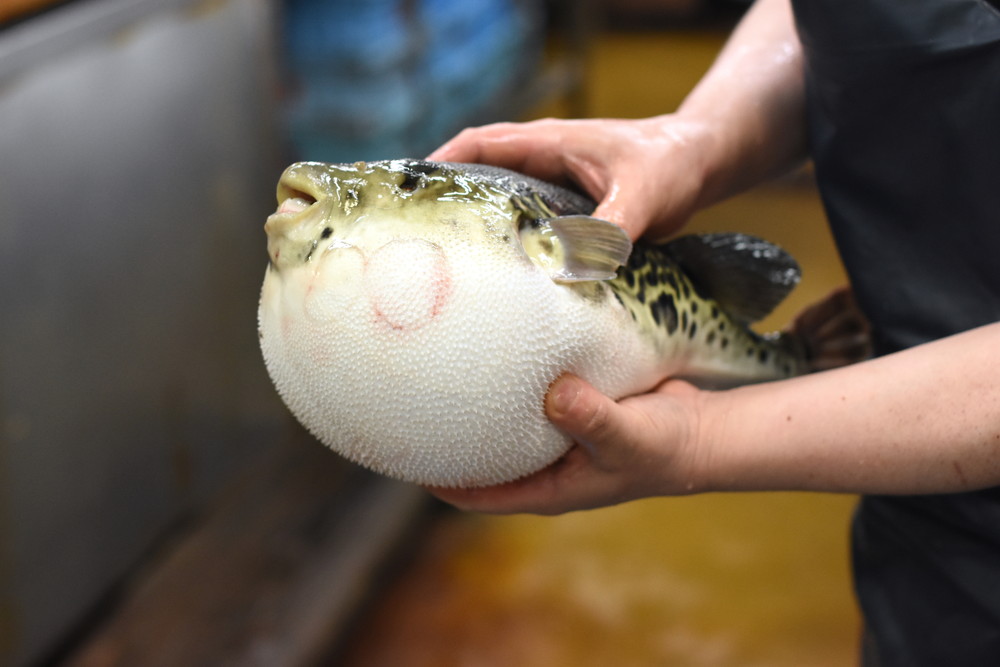
The Haedomari Market in Hikoshima, Shimonoseki is the only market in Japan that handles only fugu, and fugu from all over Japan gather here. The amount handled is No.1 in Japan. After 3AM, the bidder and the broker start the “Fukuro seri”, deciding the prices by gripping the fugu by their fingers in a bag, and after that they are delivered all over the country.
Cooking and eating the tora fugu, being taught by the top rank professionals
The highest class tora fugu is called the king of many other varieties of fugu. It is relatively cheap in Shimonoseki, compared to the price in Kanto region*9 or Kansai region*10, but still the price is a little high for a general person to purchase. However, there is a special place where you can relish the tora fugu and have fun at a fair price. The “Fukurakusha”, 15 minute drive from the JR Shimonoseki Train Station.
*9 an area of Japan which consists of 7 prefectures including Tokyo
*10 an area of Japan which consists of 7 prefectures including Osaka
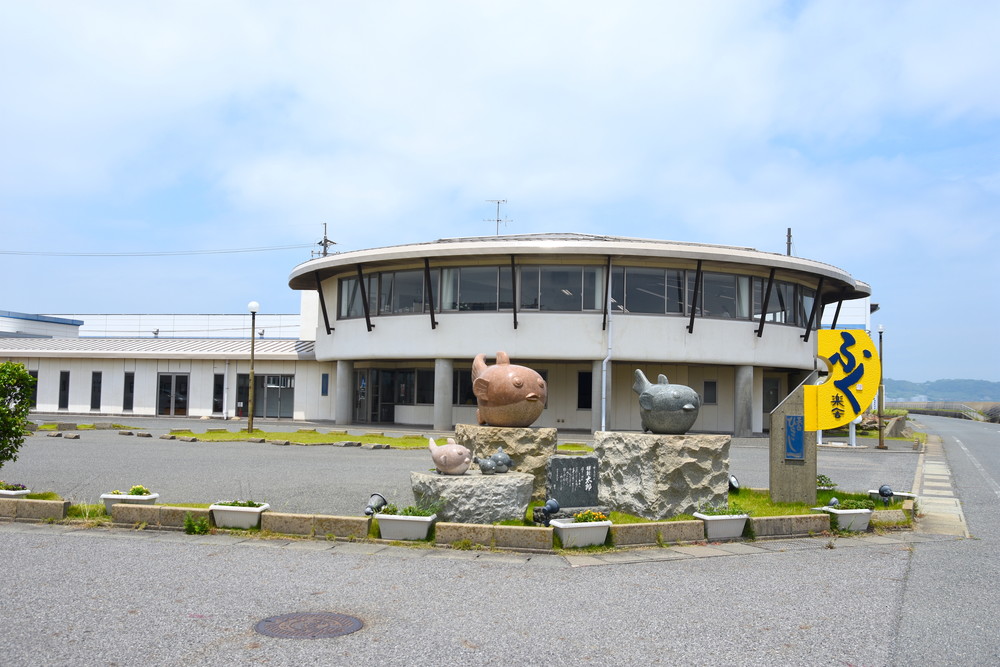
“At Shimonoseki , the amount of fugu handled is No.1 in Japan, but since they are high quality fishes, people do not feel fugu familiar to themselves. We wanted people to eat fugu more casually, so we made this factory.” Mr. Yasunori Hirao from Tenpaku Hirakoshi told us. Mr. Hirao’s grandfather started a fugu middle trader “Hirakoshi” in 1935, and Tenpaku Hirakoshi derived from that company from 1997. Here, fugu’s cooking experience “Fuku fuku Seminar” is held.
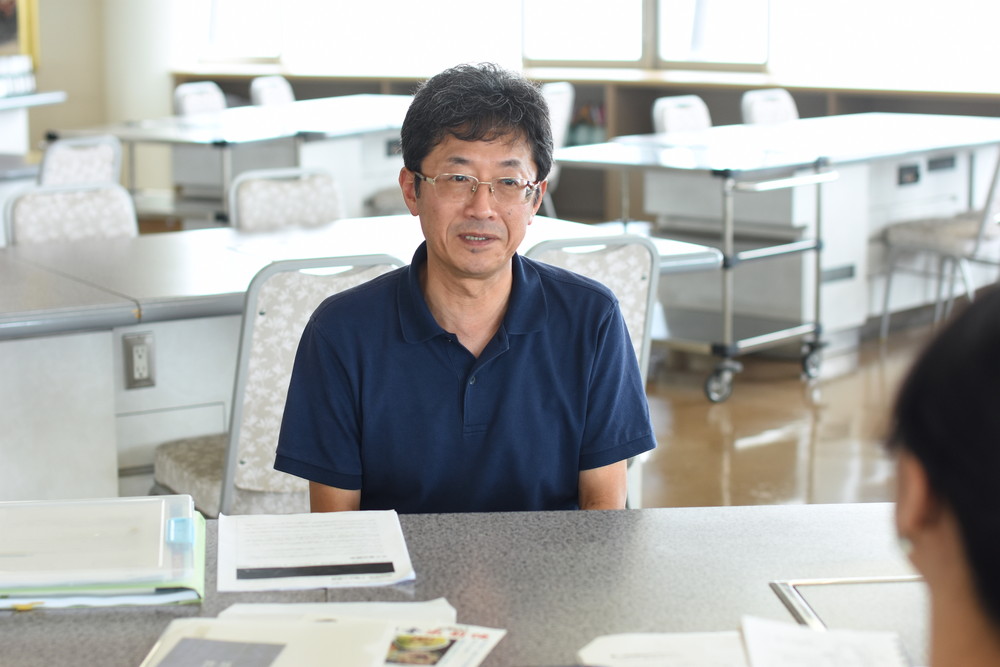
Fugu has deadly poison, and in order to dispose the poisonous parts and fish fillets, fugu processing specialist licenses are required. At “Fukurakusha”, the parts called “migaki” that can be eaten are used to cook in this experience. At the “Tenpaku Course” (7,000 Japanese Yen per person, 7,130 yen after October 1st, 2019), using one luxurious “migaki”, 3 dishes are going to be made; minced fugu, kawa sashi*11, fugu chiri*12. This day, the instructor was the master chef, Mr. Yusuke Uchida. He has a 27 year experience of processing fugu, and he is in charge of cooking the natural tora fugu presented to the house of Imperial prince with his amazing abilities. He was an openhearted person, and his explanations were easy to understand and fun.
*11 sashimi made from the skin of fugu
*12 a hot pot plate of fugu and vegetables

The experience proceeds while listening to Mr. Uchida’s instructions and watching his demonstrations. First, take the knife and cut off the fugu’s head and tail. Next, fillet the fish, which makes people steeled against it but Mr. Uchida says “You just need to cut the knife parallel to the bones. Fugu doesn’t have fine bones, so filleting is the easiest.” It was actually very easy to cut.
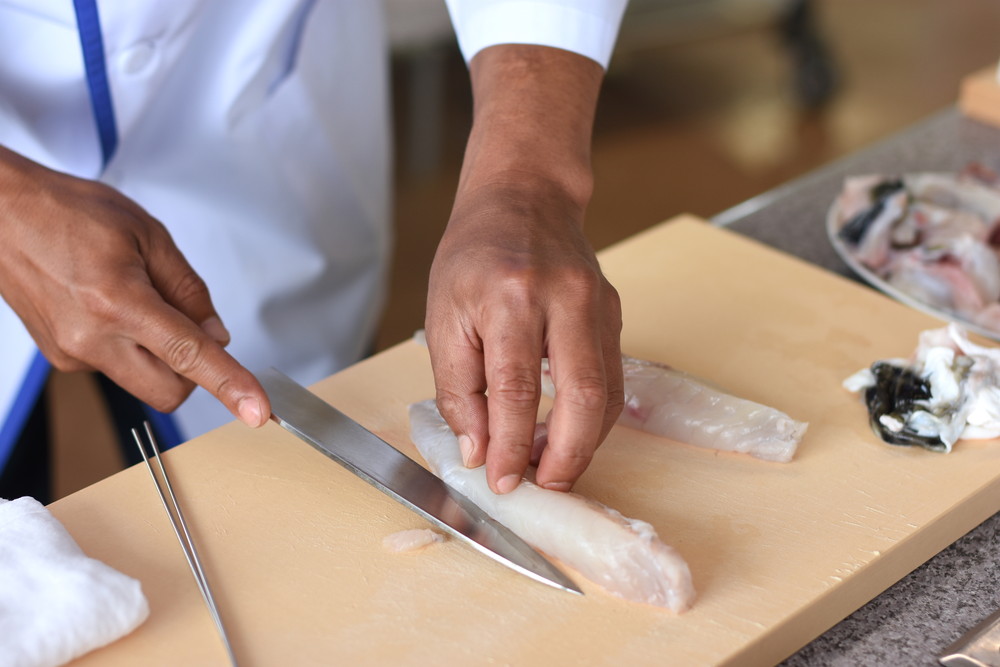
To make minced fugu, first lightly sear it. “Searing makes it easy to slice sashimi. The umami increases and the savory taste overflows.” This explanation makes the people excited. After skewering the fugu and pouring hot water, the following phase is to grill the fugu on the gridiron.
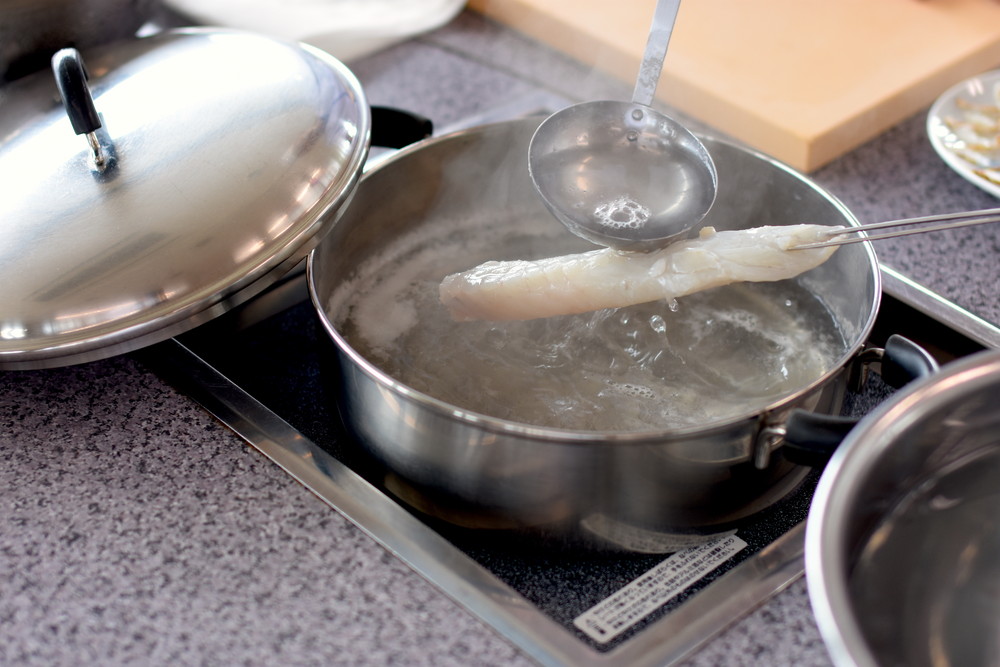
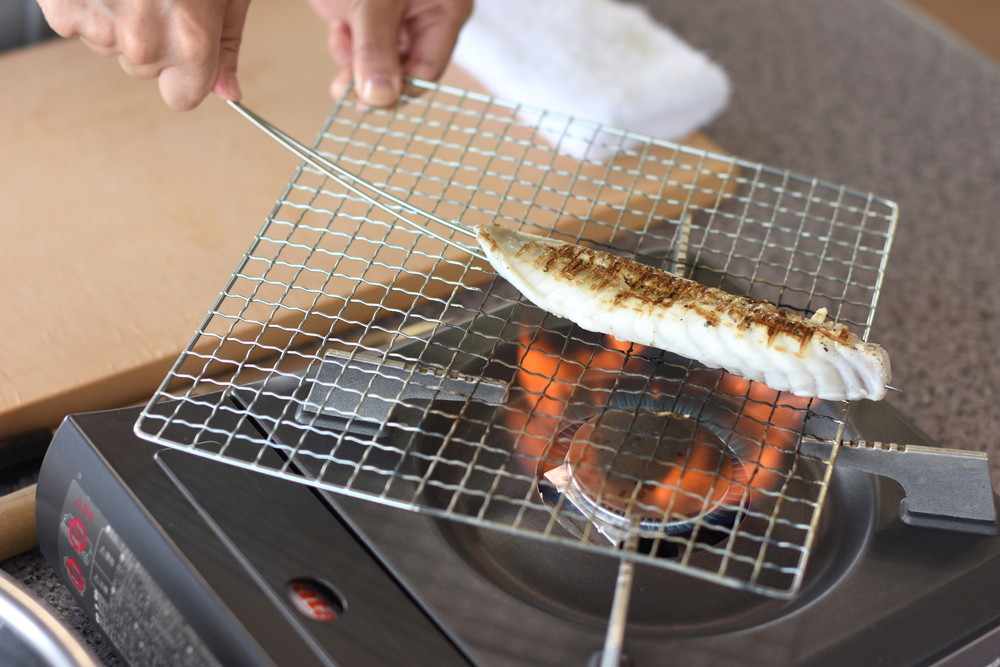
Then, parboil the skin. “Fugu’s skin is doubled, the skin on the outside and muscles in the inside. Rub off the extra gelatin.” Inside and outside of the skin of the back and stomach looks and feels different.
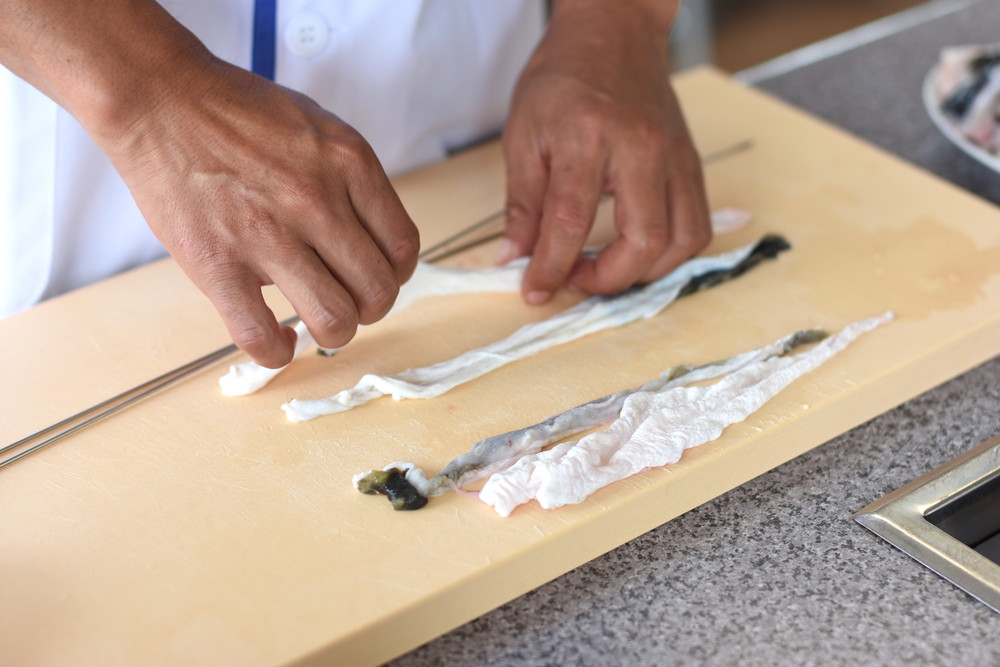
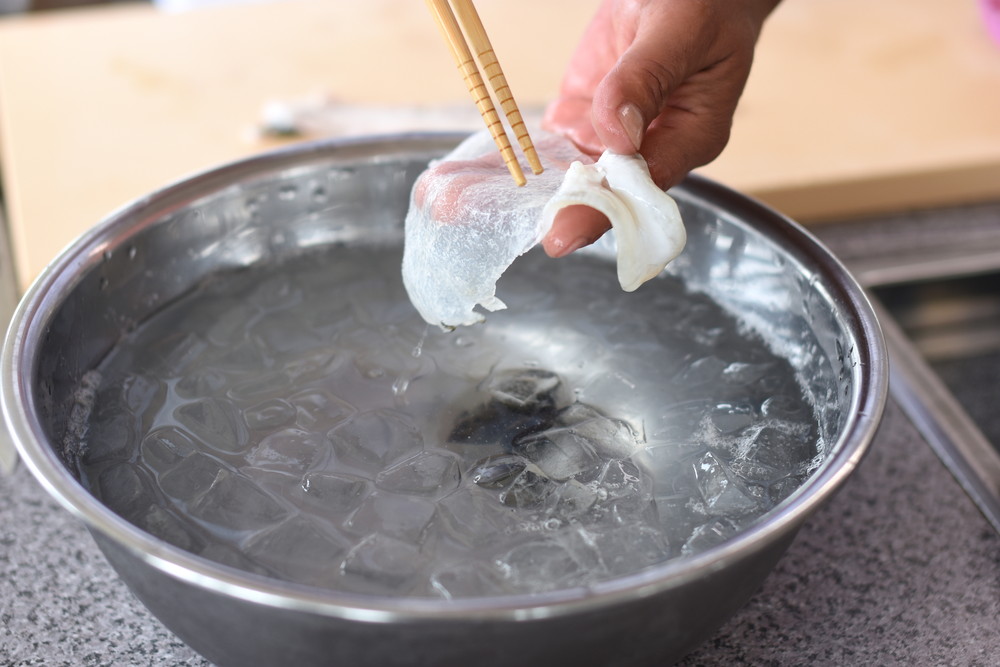
The following step is to slice the minced fugu thinly. First, Mr. Uchida demonstrates with his brilliant skills and lines up the beautiful sashimi one after another. “Slicing slowly is the trick to make the sashimi thin. But slicing all of the sashimi the same thickness and the same width equally is the difficult part.” It seems easy, but after trying, the “migaki” was tough and it was impossible to slice equally. Slicing it too thin would make a hole in the sashimi, or make the sashimi small. Thinking about the angle of the knife, relaxing, where to put your finger, makes the motions awkward. Getting the hang of it with Mr. Uchida’s advice, place the sashimi on the dish and the meal is complete.
The dish looks quite different from the perfect Mr. Uchida’s dish, but he said “It looks nice without flattery. If anyone could do this well, our job would be unnecessary.” Completing the dish made a feeling of satisfaction.

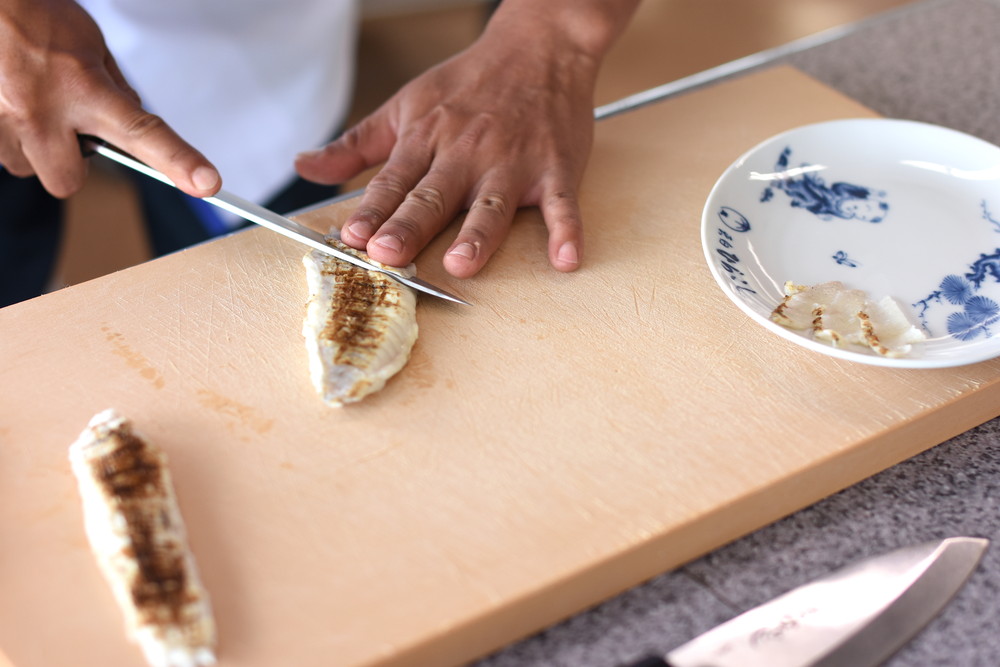
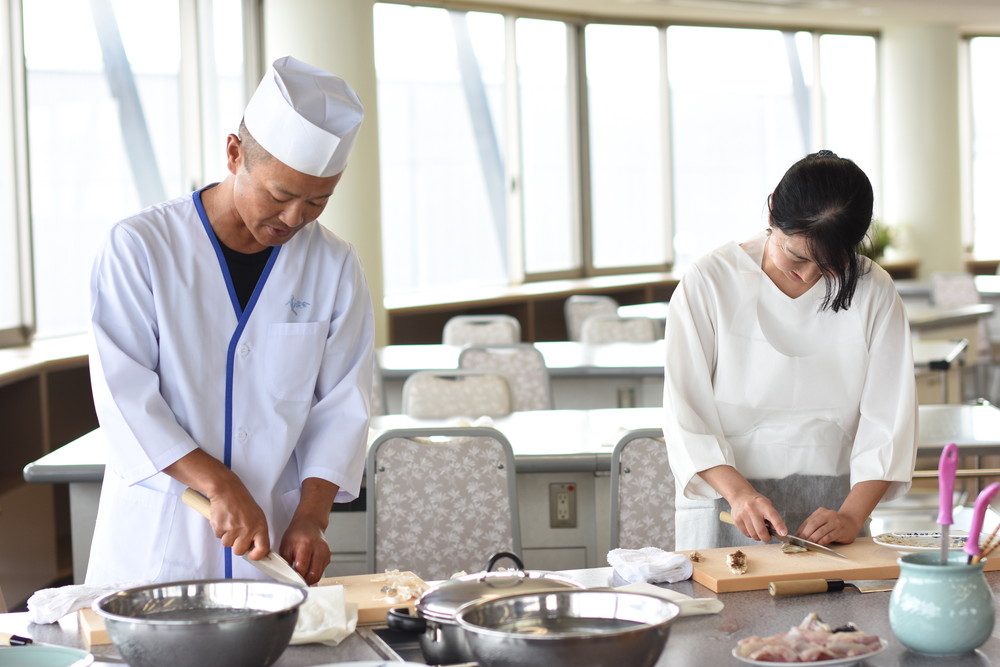
The other half of the “migaki”, original ponzu vinegar*13, tora fugu grilled fins for hot sake, and booklet can be taken home as a souvenir. Moreover, a completion was awarded to every participant.
*13 a popular sauce used in Japan made of soy sauce and citrus juice
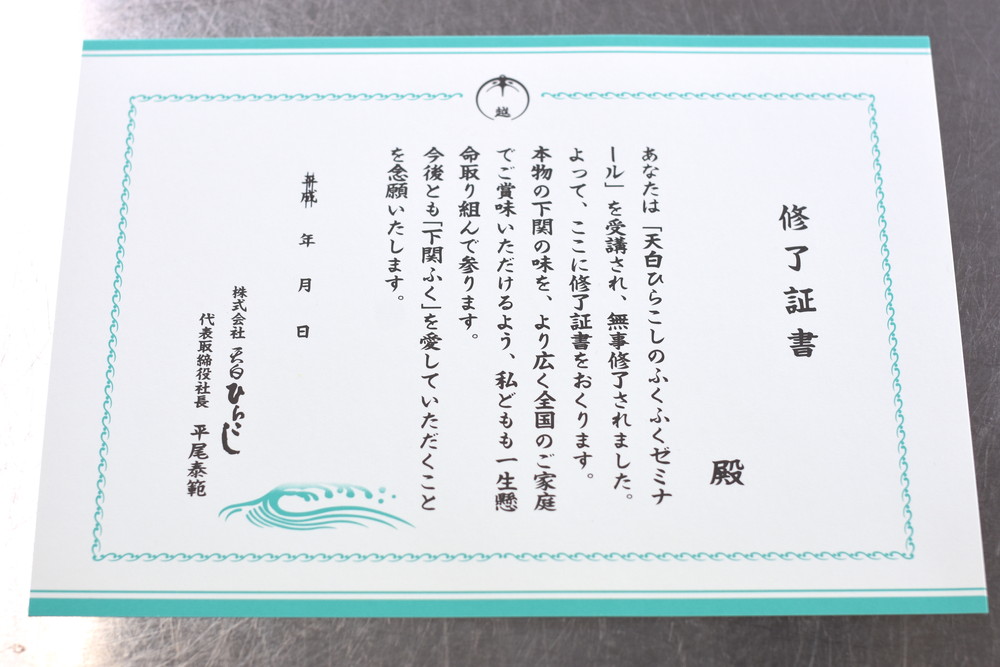
And finally, the last step is to eat the minced fugu, kawa sashi, and fugu chiri. The minced fugu taste was not only the particular fugu’s simple taste, but a savory taste was added by searing. The umami spreads in the mouth bite after bite. The fact that you made it by yourself would make the impression more increasing. Fugu chiri was soft and tender. The delicate dashi soup made from ara*14 made the tofu and vegetables taste exceptional. The last dish of the meal is the zosui*15, which will make you want to eat more even if your full.
*14 leftover bony fish scraps
*15 a kind of porridge of rice and vegetables with meat or fish
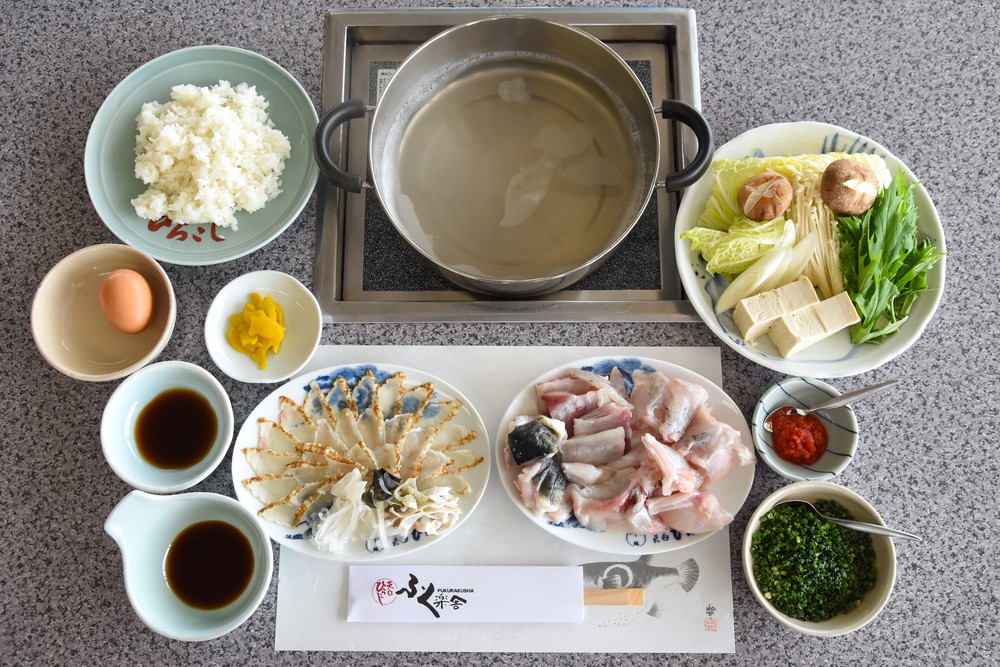
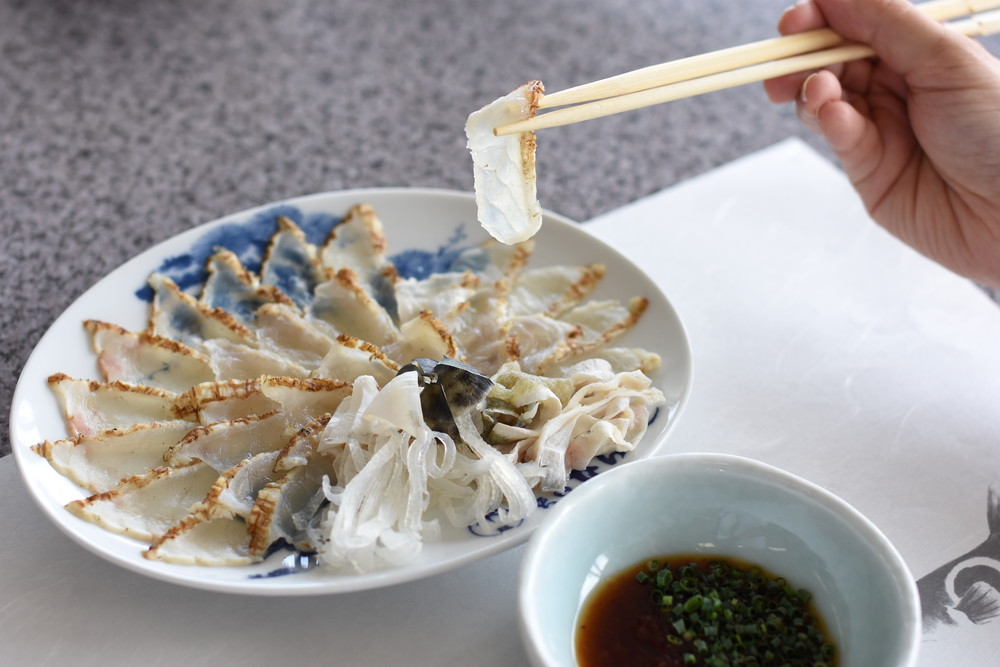
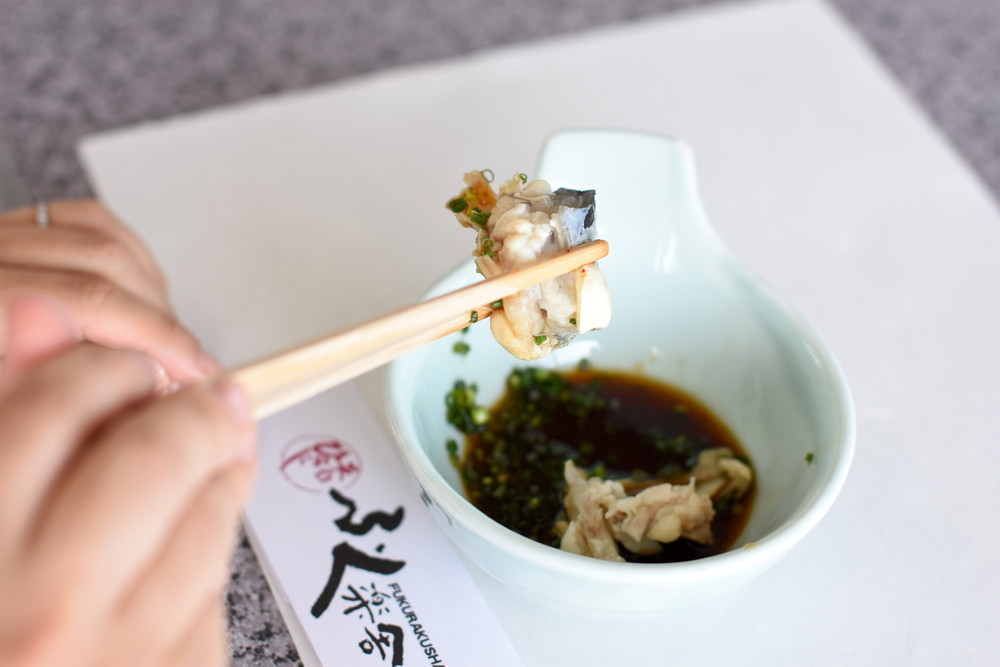
If you can eat a full course of fugu at a restaurant, it would usually cost about 15,000 Japanese yen. But at this experience you can cook and take home a souvenir with only 7,000 yen. Every year, 500~700 people come to experience this seminar from all over the world.
If you cannot go all the way to “Fukurakusha”, try going to Karato Market. You can purchase “migaki” at a fair price.
Tenpaku Hirakoshi
5-2-1 Hikoshima, Nishiyama-cho, Shimonoseki-shi, Yamaguchi
Telephone: 083-267-4998
Holidays: the beginning of the year, once or twice a month
Website: http://www.fukurakusya.jp/(japanese only)
Fuku Fuku Seminar Reservation
Time of seminar: AM11:00-PM1:00
Number of capacity: 8~80 people
Holidays: July 10th – September 20th, December
*There is also the “Yoshitsune Course”(4,053 yen per person) which cooks one fugu by 2 people.
*“Yosutsune Course” does not include a souvenir and completion certification.
*“Migaki” are also sold.
Karato Market
5-50 Karato-cho, Shimonoseki-shi, Yamaguchi
Telephone: 083-231-0001
- Writer
- Emi Sasaki
- Photographer
- Tsukasa Kubota
ソトレシピLOCAL GUIDE
-
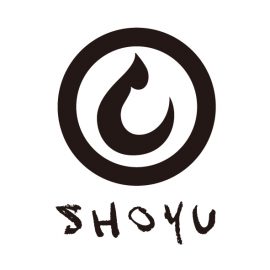 For more
For moreSHOYU Editorial department(SHOYU Editorial department)
information
Related articles
-

[NEWS] Collaboration of Japanese Kawaii Culture and Japanese Cuisine
Harajuku and Omotesando area in Tokyo are the sacred
- from:
- Minami Aoyama, Minato-ku, Tokyo
- genre:
- Experience / Eat
POSTED on 2019.11.06



